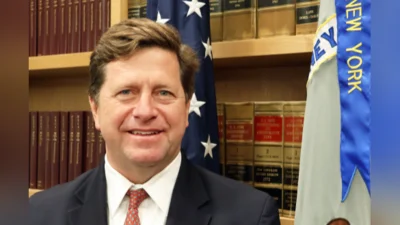The Congressional Record is a unique source of public documentation. It started in 1873, documenting nearly all the major and minor policies being discussed and debated.
“STATEMENTS ON INTRODUCED BILLS AND JOINT RESOLUTIONS” mentioning the U.S. Dept of State was published in the Senate section on pages S6674-S6677 on June 9, 2004.
The publication is reproduced in full below:
STATEMENTS ON INTRODUCED BILLS AND JOINT RESOLUTIONS
By Mr. BINGAMAN:
S. 2513. A bill to authorize the Secretary of the Interior to provide financial assistance to the Eastern New Mexico Rural Water Authority for the planning, design, and construction of the Eastern New Mexico Rural Water System, and for other purposes; to the Committee on Energy and Natural Resources.
Mr. BINGAMAN. Mr. President, today I am pleased to introduce a bill that authorizes the Bureau of Reclamation to help communities in eastern New Mexico develop the Eastern New Mexico Rural Water System
(ENMRWS). The water supply to be made available by this project is absolutely critical to the region's future. I look forward to working with my colleagues here in the Senate to help make this project a reality.
The source of water for the ENMRWS is Ute Reservoir, a facility constructed by the State of New Mexico in the early 1960s. In 1966, Congress authorized Reclamation to study the feasibility of a project that would utilize Ute Reservoir to supply water to communities in eastern New Mexico (Pub. L. 89-561). Numerous studies were subsequently completed, but it was not until the late 1990s that several communities, concerned about their reliance on declining and degraded groundwater supplies in the area, began to plan seriously for the development of a regional water system that would make use of the renewable supply available from Ute Reservoir.
As part of that process, the Eastern New Mexico Rural Water Authority was formed to carryout the development of the ENMRWS. The Authority consists of nine communities and three counties in eastern New Mexicop and has been very effective in finalizing the studies and planning necessary to move forward with the project.
This is a very important bill to the citizens of New Mexico. It has the broad support of the communities in the region, as well as financial support from the State of New Mexico. There is no question that completion of the ENMRWS will provide communities in Quay, Roosevelt, and Curry counties with a long-term renewable source of water that is needed to sustain current economic activity and support future growth and development in the region. I hope my colleagues will support this legislation, thereby helping to address water needs in the rural West.
I ask unanimous consent that the text of the bill be printed in the Record.
There being no objection, the bill was ordered to be printed in the Record, as follows:
S. 2513
Be it enacted by the Senate and House of Representatives of the United States of America in Congress assembled,
SECTION 1. SHORT TITLE.
This Act may be cited as the ``Eastern New Mexico Rural Water System Act of 2004''.
SEC. 2. FINDINGS AND PURPOSES.
(a) Findings.--Congress finds that--
(1) the Entrada Aquifer and the Southern High Plains
(Ogallala) Aquifer--
(A) provide 100 percent of the municipal and industrial water supplies for communities in East Central New Mexico; and
(B) serve a large majority of the agricultural water users in East Central New Mexico;
(2) the Entrada and Southern High Plains Aquifers are declining in quantity and deteriorating in quality;
(3) despite voluntary conservation efforts and improvements in agricultural water use efficiencies, current estimates indicate that present levels of groundwater use in some areas of eastern New Mexico are not sustainable beyond 12 to 25 years after the date of enactment of this Act;
(4) in 1959, the State of New Mexico began construction of the Ute Dam and Reservoir on the Canadian River to develop a long-term sustainable water supply for eastern New Mexico;
(5) section 2 of Public Law 89-561 (80 Stat. 711) authorized the development of a feasibility study for a water supply project in eastern New Mexico;
(6) since the feasibility study was authorized, a number of studies have been completed as part of the feasibility study process, including a 1994 study by the New Mexico Interstate Stream Commission estimating the firm annual yield of water from Ute Reservoir at 24,000 acre-feet per year;
(7) in March 1997, the New Mexico Interstate Stream Commission and the Ute Water Commission entered into an agreement for the purchase of 24,000 acre-feet of water per year for beneficial consumptive use in eastern New Mexico;
(8) the Eastern New Mexico Rural Water Authority was established to plan, finance, develop, and operate the Eastern New Mexico Rural Water System;
(9) the conceptual design report for the Eastern New Mexico Rural Water System--
(A) was finalized in August 2003;
(B) incorporates a Bureau of Reclamation willingness and ability to pay report prepared in August 2002; and
(C) was subject to a peer review process that resulted in a supplement to the conceptual design report, the Eastern New Mexico Rural Water System Conceptual Design Peer Review Final Report (December 2003);
(10) the State of New Mexico--
(A) strongly supports the development of the Eastern New Mexico Rural Water System; and
(B) has appropriated amounts to the New Mexico Water Trust Fund to assist communities in eastern New Mexico in securing the financial resources necessary to provide an acceptable cost share for development of the system; and
(11) completion of the Eastern New Mexico Rural Water System would provide Quay, Roosevelt, and Curry Counties in the State of New Mexico with a long-term reliable and renewable source of water that would--
(A) sustain current economic activity; and
(B) support future economic development and growth in the region.
(b) Purpose.--The purpose of this Act is to authorize the Secretary of the Interior to provide financial and technical assistance to the Eastern New Mexico Rural Water Authority to plan, design, and construct the Eastern New Mexico Rural Water System to provide a long-term reliable and renewable source of water to communities in eastern New Mexico.
SEC. 3. DEFINITIONS.
In this Act:
(1) Authority.--The term ``Authority'' means the Eastern New Mexico Rural Water Authority, an entity formed under State law for the purposes of planning, financing, developing, and operating the System.
(2) Conceptual design report.--The term ``Conceptual Design Report'' means the Eastern New Mexico Rural Water System final report dated August, 2003, as supplemented by the Eastern New Mexico Rural Water System Conceptual Design Peer Review Final Report (December 2003).
(3) Logan sewer project.--The term ``Logan sewer project'' means the project to improve the water quality in Ute Reservoir, as described in the Village of Logan Wastewater System Preliminary Engineering Report (November 2003).
(4) Plan.--The term ``plan'' means the operation, maintenance, and replacement plan required by section 5(b)(1).
(5) Portales energy recovery system.--The term ``Portales energy recovery system'' means the infrastructure to reduce pressure in the water system and generate useable power, as described in the Eastern New Mexico Rural Water System Conceptual Design Peer Review Final Report (December 2003).
(6) Secretary.--The term ``Secretary'' means the Secretary of the Interior.
(7) State.--The term ``State'' means the State of New Mexico.
(8) System.--
(A) In general.--The term ``System'' means the Eastern New Mexico Rural Water System, a water delivery project designed to deliver approximately 24,000 acre-feet of water per year from the Ute Reservoir to communities located in Quay, Roosevelt, and Curry Counties in eastern New Mexico, as described in the Conceptual Design Report.
(B) Inclusions.--The term ``System'' includes--
(i) the Logan sewer project;
(ii) the Tucumcari advanced wastewater treatment facility; and
(iii) the Portales energy recovery system.
(9) Tucumcari advanced wastewater treatment facility.--The term ``Tucumcari advanced wastewater treatment facility'' means the project to improve the water quality in the Ute Reservoir, as described in the Eastern New Mexico Rural Water System Conceptual Design Peer Review Final Report (December 2003).
(10) Ute reservoir.--The term ``Ute Reservoir'' means the impoundment of water created in 1962 by the construction of the Ute Dam on the Canadian River, located approximately 32 miles upstream of the border between New Mexico and Texas.
SEC. 4. EASTERN NEW MEXICO RURAL WATER SYSTEM.
(a) Financial Assistance.--
(1) In general.--The Secretary may provide financial assistance to the Authority to assist in planning, designing, conducting related preconstruction activities for, and constructing the System.
(2) Use.--
(A) In general.--Any financial assistance provided under paragraph (1) shall be obligated and expended only in accordance with a cooperative agreement entered into under section 6(a)(2).
(B) Limitations.--Financial assistance provided under paragraph (1) shall not be used--
(i) for any activity that is inconsistent with developing the facilities described in the Conceptual Design Report, including development of the Logan sewer project; and
(ii) to plan or construct facilities used to supply water to supply irrigation for agricultural purposes.
(b) Cost-Sharing Requirement.--
(1) In general.--The Federal share of the total cost of any activity or construction carried out using amounts made available under this Act shall be 80 percent of the total cost of the System
(2) System development costs.--For purposes of paragraph
(1), the total cost of the System shall include any costs incurred by the Authority on or after October 1, 2003, for the development of the System.
(c) Limitation.--No amounts made available under this Act may be used for the construction of the System until--
(1) a plan is developed under section 5(b); and
(2) the Secretary and the Authority have complied with any requirements of the National Environmental Policy Act of 1969
(42 U.S.C. 4321 et seq.) applicable to the System.
(d) Title to Project Works.--Title to the infrastructure of the System shall be held by the Authority, the Town of Logan, New Mexico, the City of Tucumcari, New Mexico, or as may otherwise be specified under State law.
SEC. 5. OPERATION, MAINTENANCE, AND REPLACEMENT COSTS.
(a) In General.--The Authority shall be responsible for the annual operation, maintenance, and replacement costs associated with the System.
(b) Operation, Maintenance, and Replacement Plan.--
(1) In general.--The Authority, in consultation with the Secretary, shall develop an operation, maintenance, and replacement plan that establishes the rates and fees for beneficiaries of the System in the amount necessary to ensure that the System is properly maintained and capable of delivering the quantities of water described in the Conceptual Design Report.
(2) Modifications.--The allocation of water to the communities specified in the Conceptual Design Report may be modified to adjust the rates and fees in a manner that ensures that the purposes of the plan are addressed.
SEC. 6. ADMINISTRATIVE PROVISIONS.
(a) Cooperative Agreements.--
(1) In general.--The Secretary may enter into any contract, grant, cooperative agreement, or other agreement that is necessary to carry out this Act.
(2) Cooperative agreement for provision of financial assistance.--
(A) In general.--The Secretary shall enter into a cooperative agreement with the Authority to provide financial assistance or any other assistance requested by the Authority for planning, design, related preconstruction activities, and construction of the System.
(B) Requirements.--The cooperative agreement entered into under subparagraph (A) shall, at a minimum, specify the responsibilities of the Secretary and the Authority with respect to--
(i) ensuring that the cost-share requirements established by section 4(b) are met;
(ii) completing the planning and final design of the System;
(iii) any environmental and cultural resource compliance activities required for the System; and
(iv) the construction of the System.
(b) Technical Assistance.--At the request of the Authority, the Secretary may provide to the Authority any technical assistance that is necessary to assist the Authority in planning, designing, constructing, and operating the System.
(c) Effect.--Nothing in this Act---
(1) affects or preempts--
(A) State water law; or
(B) an interstate compact relating to the allocation of water; or
(2) confers on any non-Federal entity the ability to exercise any Federal rights to--
(A) the water of a stream; or
(B) any groundwater resource.
SEC. 7. AUTHORIZATION OF APPROPRIATIONS.
(a) In General.--There is authorized to be appropriated to the Secretary to carry out this Act $250,000,000 for the period of fiscal years 2005 through 2016.
(b) Adjustments.--
(1) In general.--The amount authorized under subsection (a) shall be adjusted as necessary to account for increases in development costs after the date of enactment of this Act, as determined using appropriate engineering cost indices (as determined by the Secretary).
(2) Allocation.--The Federal share and non-Federal share of the cost increases determined under paragraph (1) shall be allocated in accordance with the cost-sharing requirements established by section 4(b).
(c) Nonreimbursable Amounts.--Amounts made available to the Authority in accordance with the cost-sharing requirement under section 4(b) shall be nonreimbursable and nonreturnable to the United States.
(d) Availability of Funds.--At the end of each fiscal year, any unexpended funds appropriated pursuant to this Act shall be retained for use in future fiscal years consistent with the purposes of this Act.
______
By Mr. LUGAR:
S. 2514. A resolution to authorize the transfer of funds for foreign countries to participate in international peacekeeping or peace enforcement operations, and for other purposes; to the Committee on Foreign Relations.
Mr. LUGAR. Mr. President, this legislation supports the President's Global Peace Operations Initiative. That initiative contemplates a multi-year program to enhance global peacekeeping capacity by training and equipping military and security forces to facilitate the deployment of trained forces to international peace support operations.
The initiative stems from recognition of the concerns that have been identified in dealing with peace support operations. Specifically it has become clear that many countries have the political will to participate in peace support operations, but lack the capabilities and resources required to deploy and sustain themselves in the field. Similarly, some countries have the capacity to conduct traditional peacekeeping, but many missions, such as in Liberia, require combat-
like peace enforcement tasks.
The Group of Eight, meeting this week, has endorsed the President's idea that the Group should pursue the goal of training at least 75,000 international peacekeepers over the next several years and develop a plan to provide logistical support around the world. The Group of Eight has had a longstanding interest, expressed at both the Kananaskis and Evian summits, in providing technical and financial assistance to sustain and strengthen peacekeeping capacity worldwide, particularly in Africa.
This bill supports that goal by authorizing a transfer of funding from the Department of Defense to the State Department for these activities. The administration has made clear to me that the Department of Defense believes that the costs for this program would be more than offset by the savings realized by not having to deploy U.S. military units to international peace operations.
The President's leadership and initiative demonstrates the strong U.S. interest in peace and prosperity worldwide and is an expression of U.S. confidence in growing African attention to and capacity in addressing security problems on and beyond the continent.
______
By Ms. SNOWE:
S. 2515. A bill to establish the Inspector General for Intelligence, and for other purposes; to the Select Committee on Intelligence.
Ms. SNOWE. Mr. President, I rise today to introduce legislation that will address what I believe are fundamental deficiencies in the Intelligence Community's organization and methods of accountability.
For some time, we have been engaged in an ongoing national debate about the scope, methods, organization and mission of our intelligence agencies. Since the creation of our modern Intelligence Community as part of the National Security Act of 1947 there have been numerous recommendations to strengthen the Intelligence Community leadership and mission to foster better communications and better serve the national security of the nation. Events over the last decade have highlighted some disturbing intelligence failures--we have all spoken sadly of the 1993 World Trade Center Bombing, the Khobar Towers tragedy, the attack on the USS Cole, the bombs at our embassies in East Africa and of course, September 11. As a Congress we have an obligation to address these incidents and work to better our intelligence gathering and disseminating capabilities to ensure this list is not added to.
As a member of the Senate Select Committee on Intelligence--and a former member of committees on international relations and armed services in both this body and the other--I have participated in this national debate on many fronts and for many years. Irrespective of the events surrounding Director Tenet's recent resignation, I have believed strongly in the need for reform of the Intelligence Community for some time.
There is no question that the Intelligence Community requires systemic changes. Specifically, increases in human intelligence, better information sharing and greater accountability are all issues that desperately need to be addressed, and more importantly, acted on. It is my hope that the Intelligence Committee aggressively pursue specific recommendations based on a Committee-authored report to make substantive changes that will address the flaws that have been tragically revealed.
Americans need to know that their intelligence services are doing the best job possible in protecting their security. I say this even while I must recognize the dedication and professionalism of the thousands of Americans who make up our Intelligence Community. Each day across this country and around the world, they labor, mostly without recognition, to keep this country safe from harm. Our intelligence employees work under very demanding conditions and in environments that are extremely dangerous and can often shift without notice. They operate in a dizzing world of ``what ifs'' where the rules change daily. It is their vigilance upon which we rely to give us the forewarning necessary to counter the many dangers present in our world. Although it is impossible to directly express our deep appreciation for their efforts, I charge this body to relay our eternal gratitude to those who serve America so well.
But too often, breakdowns can occur that put Americans' lives at risk. There are many of us in Congress who believe that we have gone too long without making any real efforts to reform the Intelligence Community.
However appreciative we are of the service done by those who work in the fifteen agencies that make up our nation's Intelligence Community, we as a Congress have a responsibility to continue to work to find ways to help them do an even better job, and more importantly, to ensure that any failures are not repeated and that we learn from past mistakes. And at the same time, we have an obligation to the people of this country to ensure that both pride and comfort in our intelligence services exist. The people of this nation, and those of us elected to represent them, have a right to know that when mistakes are made, corrections soon follow.
A major focus of mine for many years now has been accountability--
ensuring, for example, that government employees who issue travel visas to known terrorists are accountable to the American public for their actions. In this same vein, I'd like to see greater accountability brought to the Intelligence Community.
The bill I am introducing today--the ``Intelligence Community Accountability Act of 2004''--creates an independent Inspector General for Intelligence. This IG is not housed within any one agency, rather, it is an Inspector General for the entire Intelligence Community--all fifteen agencies and department members.
We must recognize that fifteen government agencies with fifteen different heads, fifteen different missions, fifteen chains of command and fifteen institutional paradigms are often handicapped in promulgating national intelligence. This in turn can lead to disconnects. And sadly in this business, such failures can lead to loss of life as we have been so graphically reminded over and over.
Intelligence comes from a variety of sources and in a wide array of forms. The fifteen members of the Intelligence Community must adequately interpret what they see, hear and find and then communicate that to policy-makers who decide best how to use it in the defense of our homeland and interests abroad. The often used but highly appropriate cliche, ``connecting the dots'' requires extensive inter-
agency cooperation for this to happen. And if that doesn't happen and failures occur as a result . . . who do we hold accountable? How do we ensure it doesn't happen again?
Let me be clear, the Inspector General for Intelligence, or IGI, that this legislation creates will not diminish the power of the IG's that already exist within each of the Intelligence Community member agencies. Rather, it will enhance their powers, giving them an overarching body to turn to when their own institutional limits are reached--when their investigations or complaints involve other Intelligence Community members who may be unwilling to cooperate or unable to provide answers or where roadblocks caused by inter-agency
``turf wars'' are reached. It helps to fill a void in the accountability and oversight responsibilities of the Director of Central Intelligence in his role as head of the entire Intelligence Community.
In the recent committee report to accompany the FY 2005 Intelligence Authorization bill, the committee acknowledged the need for changes in the Intelligence Community and stated that it believes the process of reform ``must begin.'' Therefore, I submit that we begin as soon as possible--I know that the Chairman of our committee is committed to this effort and I hope that by bringing my legislation forward at this time, my colleagues can see that I too am eager for progress and momentum.
Make no mistake--this effort is intended to be part of a larger push to overhaul the entire intelligence community's organizational structure. I welcome such a push and as we move forward in that endeavor, I will work to ensure my legislation is included in the deliberations. But until that happens, I implore my colleagues to study the issue, read my legislation and work with me to create this office.
In looking at the Intelligence Community, we need to recognize that we are dealing with an amorphous entity made up of fifteen agencies, parts of departments, and independent bodies all spread out within our federal government. They each have their own mission, chain of command, procedures, history and institutional paradigms.
By law, and specifically according to Executive Order 12333 issued by President Reagan in 1981, the Director of the Central Intelligence Agency wears a ``double hat'' by serving as the Director of the entire Intelligence Community.
Within the structure created, he often does the best he can. But as head of one of the agencies in the Community, his hands are often tied when it comes to exercising his authority over the other 14 members of a community over which he has jurisdiction.
Currently the Director of Central Intelligence has limited budget authority over the Pentagon's intelligence budget--which represents approximately 85 percent of the total intelligence community budget. According to Executive Order 12333, which also defines the responsibilities of the Director of Central Intelligence, the DCI is charged with working with the Secretary of Defense to ensure that there is no unnecessary overlap between national foreign intelligence programs and Department of Defense intelligence programs. This provides him with limited authority over the DoD intelligence budget, although historically this authority has not been exercised.
My legislation will essentially preserve the powers and role that the Director of Central Intelligence currently enjoys as adivsor to the President and head of the Intelligence Community, but it would make his office a separate entity and a member of the President's Cabinet.
I saw firsthand the consequences of serious inadequacies in coordination and communication during my twelve years as ranking member of the House Foreign Affairs International Operations Subcommittee and chair of the International Operations Subcommittee of the Senate Foreign Relations Committee. It was this lack of coordination that permitted the radical Egyptian Sheik Rahman, the mastermind of the first World Trade Center bombing in 1993, to enter and exit the U.S. five times unimpeded even after he was put on the State Department's Lookout List in 1987, and allowed him to get permanent residence status by the INS even after the State Department issued a certification of visa revocation.
And after the attacks of 9-11, I worked hard to point out the importance of the ``Three C's'' that has been lacking among federal agencies that are integral to preventing terrorism: coordination, communication, and cooperation.
This legislation that I am introducing today, is an extension of my efforts then.
The bottom line is, if knowledge is power, we are only as strong as the weakest link in our information network--therefore, we must ensure that the only ``turf war'' will be the one to protect American turf. In our fight against terrorism, we can do no less.
We must move heaven and earth to remove the impediments that keep us from maximizing our defense against terrorism, and that means changing the prevailing system and culture by re-focusing on the ``Three C's'': coordination, communication and cooperation.
Many of our greatest victories--those won by the men and women in our intelligence services--will be measured by the attacks that never happen . . . in battles we win before they ever have a name . . . in conflicts we prevent before they ever claim one American life. I hope we will pass and enact legislation that will help make that possible.
____________________








